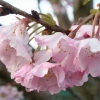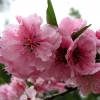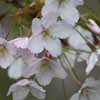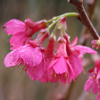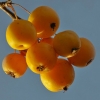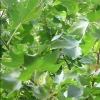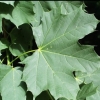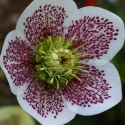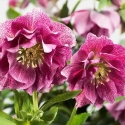Friday 18th August, 2017
Hi
Wet seems to be the catch phase this winter,and last summer and probably this coming one too...
I am not going to go on about the weather but take it from me as someone that has spent their whole career working outside that I am officially over the constant and consistent wet. I don't think that I have ever seen the creek that goes through our place so full, for so often and for so long. Having said that, we also don't have any control over this so we just have to manage our way through. The plus side could well be that the water table in the Waikato will now be well replenished and that will help us through any extended dry periods.
We are all but done with an excellent potting season and its time to get back into our garden so we have been out there making lists of tasks to be done. Pruning should be done now or at least be high on the task list as the roses that I see in the gardens, the buds are just starting to plump and open. Its time to feed roses and fruits trees with instant fertiliser to give them that extra boost into the growth phase. Don't forget that they love mulch as well and this will suppress weeds as well as slowly add nutrients as it breaks down.
We have resisted trimming our buxus hedges through the winter but as we move into spring this will be high on the list of tasks to do before the buds start to grow. There are gardens that we have cleared already for new plantings that still have to be tackled and planted and I want to get these in early so they establish well before the summer.
Next on my task list is to re mulch all the gardens. Its not that I'm lazy but the correct mulch does suppress the weeds and I'll own up to the fact that weeding isn't my favourite task. Mulch will also improve soil structure and keep the soil moist should we get a dry summer. (Here's hoping!)
As the weather continues to warm then the perennials will come on board and these will fill the gaps in the garden and provide additional colour.
Size matters and this a very difficult concept for many to grasp. Labels on trees often give approximate heights but these tend to be for conceivable time span of usually some 7 to 10 years and certainly not the mature height. These intended guides of tree height can also vary for the same variety from author to author. The size that a tree will attain in a certain time frames or even maturity can vary due to different environmental factors like soil fertility, available moisture, temperate or cool climates, right down to competition with other trees.
For example large trees like
Oaks,
Limes (Tilias) and
Beech's, etc will grow much more slowly and live for longer in a European country than say New Zealand due to the fact that its so much cooler there. Here in NZ we have such a warm, wet climate that everything grows at a much faster rate and potentially reaches maturity much quicker and theoretically has a shorter Life. I have seen amazing, huge, three hundred year old Oaks in the UK with massive trunks but the tree itself is obviously in old age because the branches were slowly reducing and they looked just so old.
Trees also tend to grow quite rapidly in the beginning while they are youthful but as they reach maturity this tends to settle down and whilst they still increment in size the growth rate is much less. On the whole trees just don't stop growing, or any plant for that matter, but rather reach a mature height and increment more slowly until they reach old age and lets not forget that all plants do have a life span.
As I look around our garden centre and all the garden environs that we have created, I am reminded that its a constant process of management, as time goes on, as plants and trees mature or get too big for the space. The amazing Tilias (Lime s) that create a back drop behind Pete Cottage and protect the nursery from the southerly winds need crown lifting every other year so that we can get a truck carrying a container down the drive. They have probably reached the 20 year time frame which isn't old in the age of trees and have all touched branches. There is a choice that we could take out every second tree and let them mature into larger crowns or just let them evolve and remain like a giant hedge on stilts which is probably my plan. Then there are the upright Hornbeans (Carpinus betulus Fastigiata)on the other side of the drive with Magnolia Little gem between them which are all almost touching and I'm trying to convince Harry that we need to lose the Little gems to allow the continued growth of the Hornbeams
On this basis I tend to group trees into those that potentially grow to medium or large size.. on that I note I'm not sure that there really are small trees, of course there are some cultivars that do remain somwhere at 2 to 3 metres but most would fit into the medium category of 3 to 6 metres which account for many ornamental selections that we would choose for our urban landscapes.
Fagus Sylvatica or English Beech is a very handsome tree that eventually forms quite a large round tree with egg sized green leaves that do have a slight wave. I consider Beech trees to be reasonable hardy and they have many uses from being hedged, standardised or grown as a mature trees that will provide shade, wind protection and suit feature plantings. An interesting fact about Beeches is that they don't tend to loose their leaves when all the other trees do in the Autumn but rather the leaves are pushed off as the new buds start to grow in the spring. Personally I like the seasonal look of the brown leaves remaining on the trees followed by that very special green of the new spring growth.
Fagus sylvatica purpurea or Copper Beech is the red or purple leaved form so if you are hankering for a different hedge from everyone else then consider this seedling form. Of course you could just let this grow into a normal tree just like the green version. Then there are also grafted clones of the beech which we have called
Riversii which has an especially very dark, purple black leaf. I think that the foliage is used for floral work when the leaves are mature and sat in Glycerine and water for the stems to take up.
Fraxinus raywoodii or
Claret Ash. I am always grateful for the claret ash that we planted on our original boundary which is now the centre feature tree in the middle of the garden centre. This handsome tree provides the shade that we so badly need in the height of summer for all the customers in the nursery. Green leaves through the summer are followed by the burgundy shades for what the tree is known as Claret ash. There are other cultivars to check out that may not grow as big as this one like Ornus and the Golden Ash.
Liriodendron or tulip tree is a hardy deciduous tree that will cope with the wind and has attractive yellow autumn colour. This handsome tree is often used in urban landscape as its such a hardy tree.
New arrivals for the garden
Grapes are so easy to grow and add such a neat element to the garden. we have them trained along chains of the verandah. I always let two bunches grow per shoot and then keep the vine tipped back so that the plant puts its energy into growing the grapes and not the vine. From a new plant train the vine along where you want it to be first and then in its second and third years it should be welll into fruiting for you.
Delphiniums are great perennials that should be planted now for later spring flowering. Delphiniums have amazing true blue, purple and white flowers that just look stunning in a picking garden. The long flowering stems should be staked so that they wind doesn't blow them over. If you have established Delps in the garden make sure that you have the slug bait out as the slugs and snails will eat them off so badly that they will fail to grow.
Hybrid clematis are trhe queens of these amazing climbers the flowers are just so large and spectacular. I often like to see them grown in conjunction with a climber rose so that the huge flowers poke out with the rose flowers as a contrast and use the rose as a natural support. Having said that they look pretty cool trained inside a tripod of sticks or something appropriate used as a support. Check out the cultivars that could be available to us and
preorder yours now.
Helleborus. These are all looking wonderful in full flower and nice bushy plants. Lovely range of colour in singles or doubles, take your pick.
Asparagus, Yams and
Potatoes... well its the beginning of the planting season and if you want to start growing your own produce then start getting that vege patch organised to be planted. Get the spuds in now for Christmas and then it won't be too far away to get your main crop in to have potatoes stored for the coming year. Yams need a long season and Asparagus need a dedicated bed.
Goodness where does the time go, in 12 days we will be into September, the official month of spring. Fathers day is looming on 3rd September, a day to remember Dad and do something special.
The days are really getting longer now so there is more time after work to do stuff and before we know it daylight saving hours will kick in on the day after the elections being the 24th Sept.
Have a great weekend in the garden
Cheers Lloyd, Harry and the Wairere Team
Make it a Wairere weekend where even GNOMES know that gardening's not a drag.
